
Living Tree Circles
Indigenous and Non-Indigenous Communities Walking together
Circles are sacred forms to many global Indigenous communities. Indigenous peoples such as the Oromo communities in Ethiopia have observed that the circle is a dominant symbol in Nature and has come to represent wholeness, life cycles, and metaphorically the circle can extend to spiritual beliefs and a way of understanding time continuums.
In this way, time is not linear for the Oromo people. It is circular and it rotates like the Earth in its own orbit. The same is true of Oromo law, Gaada. The Oromo peoples see, live, and respect their world operating in cycles or interlocking circles. As such the concept of circular time and learning eludes to knowing the past, present, and future as an assembly of equal parts that function and must be considered together.
In Oromo culture, there is a phrase that governs all life of Oromo society. It has been passed from generation to generation “safuu, aadaa fi duudhaa“. This phrase is repeated amongst the Oromo reminding them to cherish the past and shape the future with respect to human and flora-fauna rights. Ultimately, the message is: we must protect Nature as it is part of us, and we must value Nature as we are a part of it. A philosophy of interconnectedness and interdependence is understood by the Oromo. As we move forward to face climate challenges, we need to remember to embrace compassion, commitment, responsibility, and co-operation to work together to build resilience.
Living Circles – circular knowledge, kinship and care
performance of learning, compassion, commitment, responsibility, and cooperation
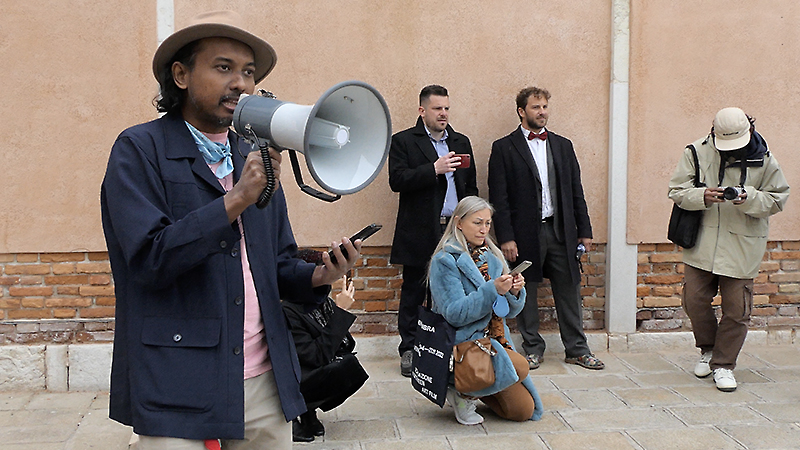
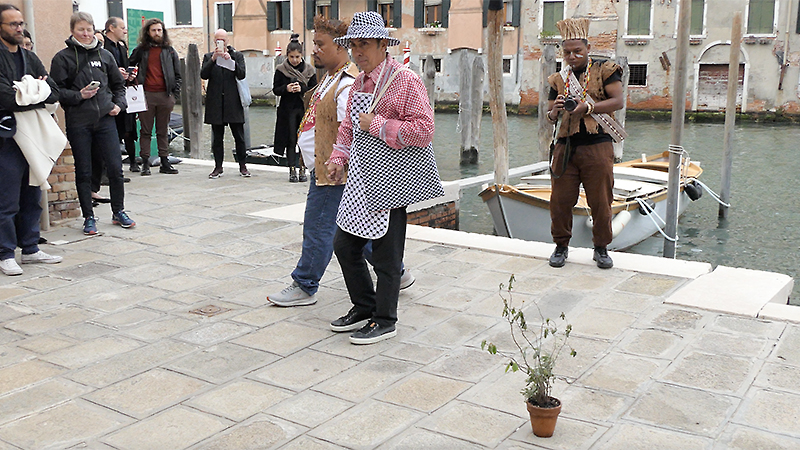
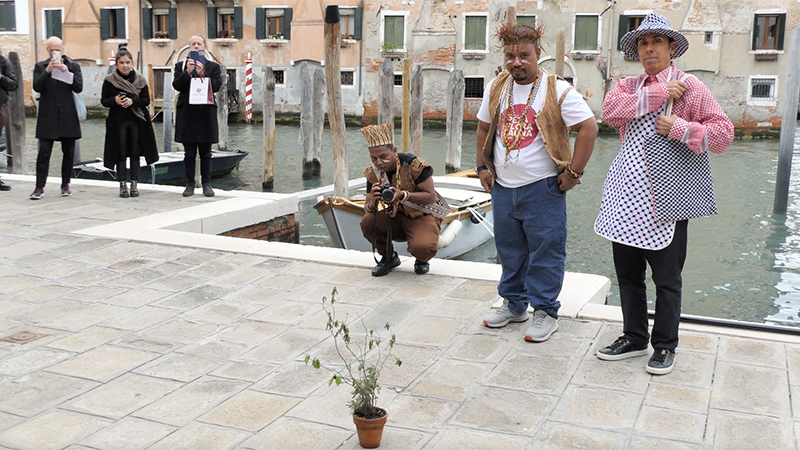
Photos from the Living Tree Circle performance at the pre-opening of the 59th Venice Biennale.
Braiding Indigenous and artistic knowledge
Oromo communities in Kofele District, represented through Rural Association for Betterment of Agro-Pastoralists (ROBA) under the care and direction of Hussein Watta, have been collaborating with climate artists Sylvia Grace Borda (Canada) and J. Keith Donnelly (Scotland). Together, the climate artists and collaborators braid two types of world knowledge, bringing together non-traditional and traditional Indigenous as well as creative practices and lived experiences in order to create equitable processes to strengthen culture, increase ecosystem service resilience, and bring climate hope to the foreground.
In the context of the Venice Biennale tradition, this performance underlines the important role of creative and artistic practitioners (both non- and Indigenous) and how they can foster and share knowledge to problem-solve local and world challenges that we continue to face, not least the threat of ecological and connected losses.
Indigenous and guest participants walk in circles around a tree sapling plant placed in the center of the plaza next to the Pera + Flora + Fauna venue. In this symbolic performance, global Indigenous community members and participants form a circle of kinship with Indigenous knowledge and land care.
The action is also done in solidarity with and acknowledgment of Indigenous resilience such as the collective climate actions of Oromo Ethiopian participants, ROBA, and climate artists (Borda&Donnelly), who are co-creating real-world examples of kinship across communities, art, and nature to address critical biodiversity and climate challenges.
The people performing the tree circle become part of the collective process and part of the living circle and the knowledge transmission it represents.
Co-Creating a Cultures of Stewardship: Observation and Acts of Language and Art
Symposium and workshop. November 17. Okanagan College, Vernon, B.C. Canada.
Presenters, Ramadan, Wako, and Borda, shared lessons in the development of knowledge exchanges to support traditional Indigenous knowledge and climate justice through the written and visual arts between Indigenous and non-Indigenous partners, detailing economic, civic and societal impacts.
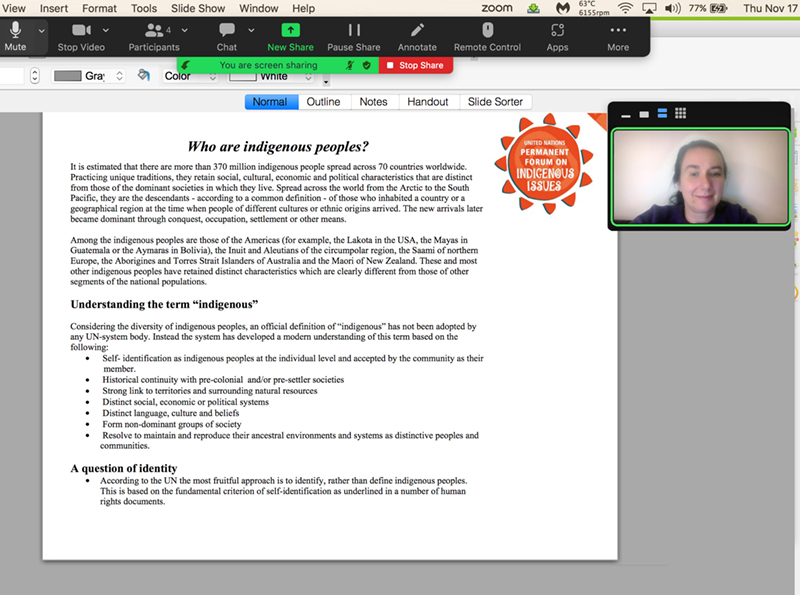
Screen shot: A slide view from Sylvia Grace Borda’s presentation summarising the UN definition of Indigenous people in order to provide attendees with an introductory understanding of cultural values. November 17, 2022. Image courtesy: Sylvia Grace Borda.
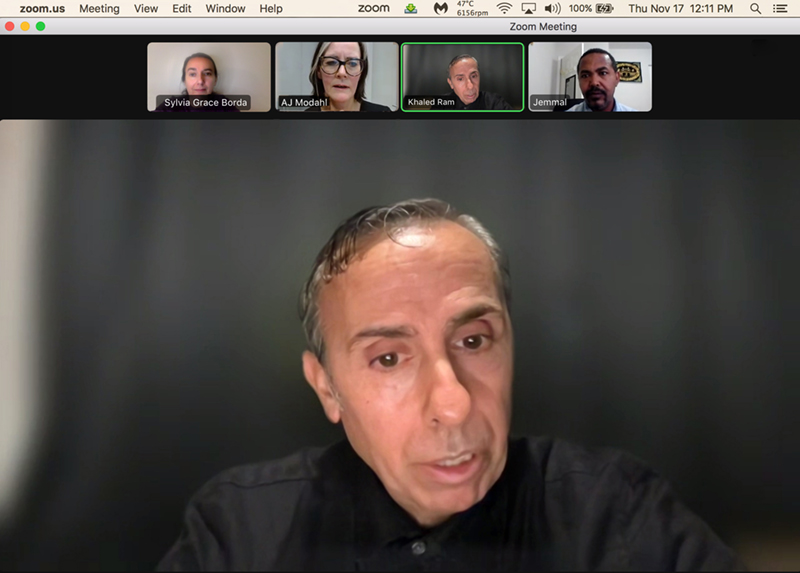
Screenshot: Khaled Ramadan, Co-curator, PERA+FLORA+FAUNA exhibition, Venice Biennale. November 17, 2022. Image courtesy: Sylvia Grace Borda.
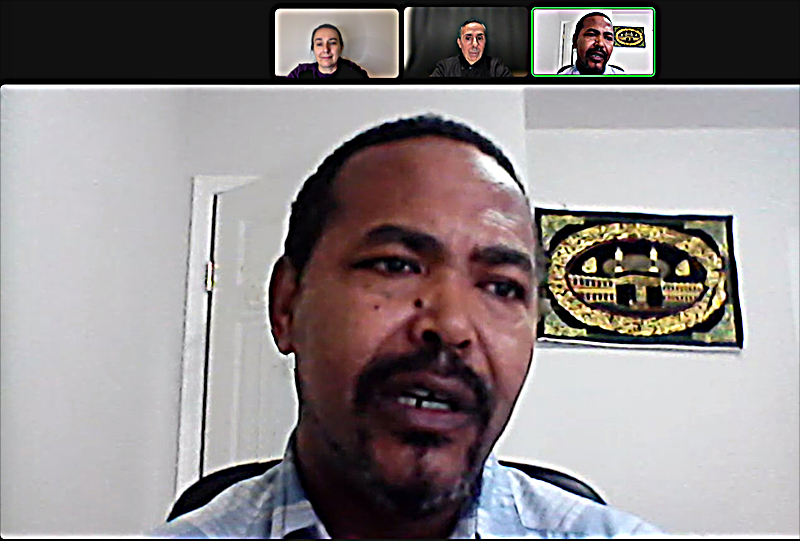
Screenshot: Jemmal Wako providing an overview of Oromo Indigenous law, beliefs, and language. November 17, 2022. Image courtesy: Sylvia Grace Borda.
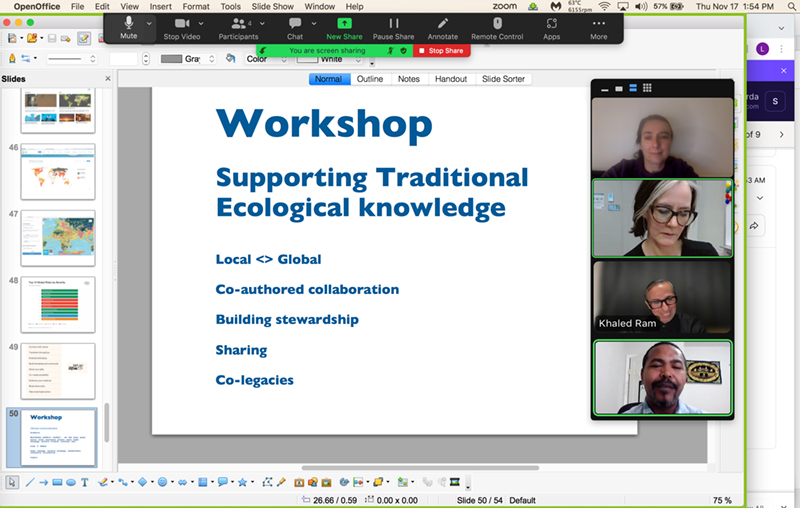
Screenshot: Sylvia Grace Borda started the workshop speaking about cultural development, knowledge exchange, and representation with Indigenous communities through project-based learning. November 17, 2022. Image courtesy: Sylvia Grace Borda.


